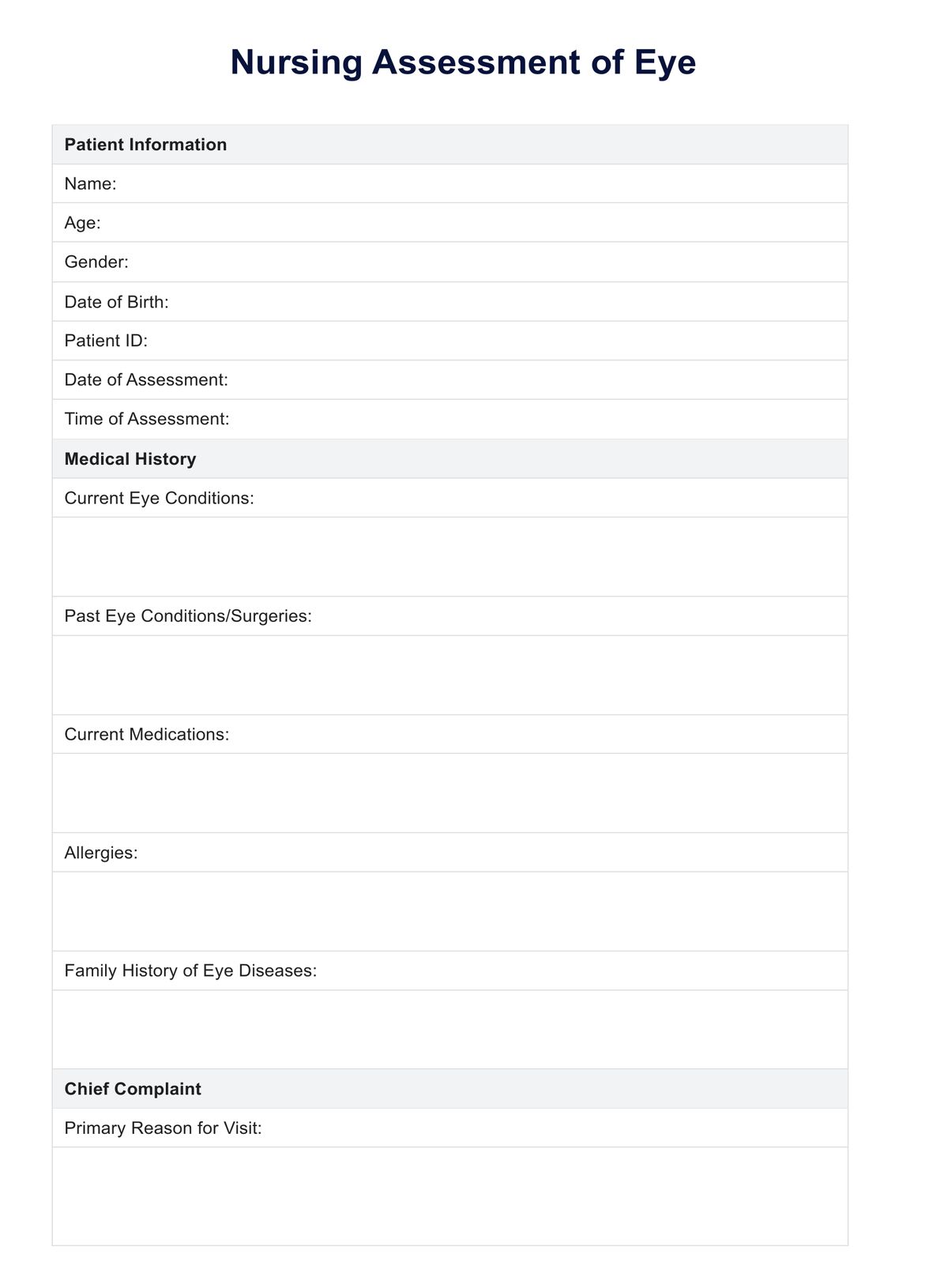An eye assessment should include a detailed history, a vision test and screening, an examination of the eyelids, conjunctiva, sclera, cornea, iris, lens, fundus, pupil reactivity tests (PERRLA), and an assessment of ocular movements.

Nursing Assessment of Eye
Explore comprehensive guidelines for nursing eye assessments, including techniques, common disorders, and the benefits of using Carepatron.
Nursing Assessment of Eye Template
Commonly asked questions
Eye assessments are conducted to identify any current vision problems, risk of future eye conditions, and signs of systemic diseases manifesting through ocular symptoms. Early detection and management of eye issues can prevent vision loss and improve overall health.
Steps in eye assessments include preparing the patient and environment, conducting a thorough history review, performing vision screening tests, examining the external and internal eye structures, assessing vision and pupil response, and evaluating eye movements and alignment.
EHR and practice management software
Get started for free
*No credit card required
Free
$0/usd
Unlimited clients
Telehealth
1GB of storage
Client portal text
Automated billing and online payments











